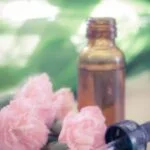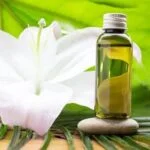Aromatherapy has gained popularity as a holistic approach to health and wellness, offering a natural way to enhance mood, alleviate stress, and promote relaxation. Aromatherapy diffusers are commonly used to disperse essential oils into the air, allowing for easy inhalation and absorption of their aromatic benefits.
However, it’s important to understand that not all aromatherapy diffusers are created equal, and some may pose potential risks to our health. In this article, we will delve into the topic of “How Aromatherapy Diffusers Toxic,” examining the potential hazards associated with certain types of diffusers and providing guidance on how to choose safe alternatives.
Aromatherapy involves the use of essential oils extracted from plants for therapeutic purposes, whether through inhalation, topical application, or ingestion. Aromatherapy diffusers play a key role in dispersing these essential oils into the air, creating an aromatic atmosphere within a space.
There are various types of aromatherapy diffusers available on the market today, each employing different mechanisms to release essential oil particles into the air. It’s important for consumers to be aware of these different types and their potential impact on indoor air quality and overall health.
While aromatherapy can have numerous benefits, there is growing concern over the potential risks associated with toxic aromatherapy diffusers. Some diffusers have been found to release harmful chemicals into the air when used, posing risks of respiratory irritation and other health issues. In this article, we will explore this topic further by discussing how certain ingredients in aromatherapy diffusers can be harmful when dispersed into the air and what consumers can do to protect themselves from potential exposure.
Understanding the Risks of Toxic Aromatherapy Diffusers
While aromatherapy diffusers are popular for their ability to create a relaxing and pleasant atmosphere, it’s important to understand that not all diffusers are created equal. Some aromatherapy diffusers can actually be toxic and release harmful chemicals into the air, posing potential health risks to those using them. These risks may include respiratory issues, skin irritation, and other adverse effects.
One of the main reasons how aromatherapy diffusers can be toxic is due to the ingredients used in the essential oils or fragrance oils that are being diffused. Some of these oils contain synthetic chemicals and additives that can be harmful when vaporized. Additionally, some diffuser devices may not be designed with proper safety measures in place, potentially leading to overheating and the release of toxic fumes.
Toxic ingredients commonly found in some aromatherapy diffusers include phthalates, parabens, and synthetic fragrances. When these substances are released into the air through a diffuser, they can lead to indoor air pollution and cause a range of health issues. Phthalates, for example, have been linked to hormonal disruptions and reproductive problems, while synthetic fragrances can trigger allergic reactions and exacerbate respiratory conditions.
| Toxic Ingredients | Potential Health Effects |
|---|---|
| Phthalates | Hormonal disruptions and reproductive problems |
| Parabens | Skin irritation and potential endocrine disruption |
| Synthetic Fragrances | Allergic reactions and respiratory issues |
Identifying Toxic Ingredients in Aromatherapy Diffusers
Aromatherapy diffusers are a popular way to enjoy the benefits of essential oils, but it’s important to be mindful of potential risks associated with toxic ingredients that some diffusers may release into the air. Here’s a list of common toxic ingredients found in some aromatherapy diffusers and how they can be harmful when diffused into the air:
- Synthetic Fragrances: Some aromatherapy diffusers may contain synthetic fragrances, which can release harmful VOCs (volatile organic compounds) into the air when heated or diffused. These VOCs can cause respiratory irritation and allergic reactions in some individuals.
- Phthalates: Phthalates are chemicals commonly used as solvents or fragrance carriers in some aromatherapy products. Exposure to phthalates has been linked to various health concerns, including hormonal disruptions and reproductive issues.
- Formaldehyde: Certain aromatherapy products may contain formaldehyde-releasing agents, which can release small amounts of formaldehyde when heated. Prolonged exposure to formaldehyde can irritate the eyes, nose, throat, and cause respiratory issues.
It’s important for consumers to be aware of these toxic ingredients and their potential health effects when choosing an aromatherapy diffuser. By understanding the risks associated with these ingredients, individuals can make informed choices and prioritize safety when selecting aromatherapy products.
In order to ensure that your aromatherapy experience is safe and free from harmful toxins, here are some tips for choosing non-toxic aromatherapy diffusers:
- Look for diffusers made from natural materials such as wood or ceramic
- Choose diffusers that use cold-air diffusion methods instead of heat
- Read labels carefully and avoid products that contain synthetic fragrances or phthalates
- Research reputable brands that prioritize safety and quality in their products
By being vigilant about the ingredients in your aromatherapy diffuser and following these tips for choosing safe options, you can enjoy the benefits of aromatherapy without exposing yourself to harmful toxins.
How to Choose Non-Toxic Aromatherapy Diffusers
When it comes to choosing an aromatherapy diffuser, it’s important to prioritize safety and non-toxic options. With the potential risks associated with toxic ingredients in some diffusers, here are some tips for selecting safe and non-toxic aromatherapy diffusers:
1. Consider the Materials: Look for diffusers made from high-quality materials such as BPA-free plastic, glass, or ceramic. Avoid diffusers made with potentially harmful materials like PVC or low-grade plastics.
2. Research the Ingredients: Before purchasing a diffuser or essential oils, research the ingredients used in the product. Be wary of synthetic fragrances and chemicals that can be harmful when dispersed into the air. Look for natural and organic ingredients instead.
3. Check Reviews and Recommendations: Take the time to read reviews and seek recommendations from trusted sources when choosing an aromatherapy diffuser. Reputable brands that prioritize safety and quality will often have positive feedback from customers.
4. Look for Certifications: Some diffusers may have certifications or approvals from organizations like the National Association for Holistic Aromatherapy (NAHA) or the Alliance of International Aromatherapists (AIA). These certifications can indicate that the product meets certain safety and quality standards.
5. Consider Different Types of Diffusers: There are various types of aromatherapy diffusers available, including ultrasonic, nebulizing, heat-based, and evaporative diffusers. Each type has its own benefits and drawbacks in terms of safety and effectiveness, so consider which type best suits your needs.
By prioritizing safe materials, natural ingredients, positive reviews, certifications, and thoughtful consideration of different types of diffusers, you can make an informed choice when selecting a non-toxic aromatherapy diffuser for your home.
Safe Alternative Aromatherapy Options
When it comes to enjoying the benefits of aromatherapy without the potential risks associated with toxic diffusers, there are several safe and alternative options to consider. These methods provide a natural and non-toxic way to experience the therapeutic effects of essential oils.
Topical Application
One safe alternative to using aromatherapy diffusers is through topical application. This involves diluting essential oils with a carrier oil, such as coconut or jojoba oil, and applying the mixture directly to the skin. Not only does this method allow for targeted relief, but it also minimizes the risk of inhaling potentially harmful chemicals. Keep in mind that some essential oils may cause skin irritation, so it’s important to perform a patch test before applying them widely.
Aromatherapy Jewelry
Aromatherapy jewelry, such as necklaces or bracelets designed to hold essential oils, provides a convenient and safe way to enjoy aromatherapy on the go. The oils are contained within the jewelry piece, allowing for subtle and personal diffusion throughout the day. This method eliminates the need for traditional diffusers altogether, reducing any concerns about inhaling toxic substances.
Diluted Sprays
Diluted sprays offer another safe and effective way to disperse essential oils into the air without the use of traditional diffusers. By mixing a few drops of essential oil with water in a spray bottle, you can create a gentle mist that provides an aromatic experience in any room. This method allows for control over the concentration of essential oil in the air while minimizing any potential risks associated with toxic diffusion.
These alternative methods provide individuals with options for enjoying the benefits of aromatherapy while mitigating concerns about exposure to harmful chemicals found in some diffusers. By exploring these alternatives, individuals can prioritize safety and make informed choices about their aromatherapy practices.
Health Effects of Exposure to Toxic Aromatherapy Diffusers
Exposure to toxic aromatherapy diffusers can have a range of health effects, especially with prolonged use. It’s important to be aware of these potential risks and to take steps to minimize exposure to harmful chemicals. This section will delve into the possible health effects of using toxic aromatherapy diffusers, as well as provide tips for recognizing symptoms of exposure and seeking medical advice.
Potential Health Effects
Using toxic aromatherapy diffusers can lead to respiratory issues, including irritation of the throat, nose, and lungs. Some chemicals released by these diffusers can also trigger allergies or asthma symptoms in individuals who are sensitive to certain substances. Additionally, exposure to toxic ingredients in aromatherapy diffusers may lead to headaches, dizziness, or nausea. Prolonged exposure could potentially contribute to more serious health problems over time.
Recognizing Symptoms
It’s essential for individuals using aromatherapy diffusers to be alert for any signs of adverse health effects. Symptoms such as difficulty breathing, coughing, or skin irritation may indicate that the diffuser is releasing harmful substances into the air. If anyone in the vicinity experiences these symptoms when the diffuser is in use, it’s important to discontinue use immediately and seek fresh air. If symptoms persist or worsen, seeking medical advice is recommended.
Seeking Medical Advice
If someone believes they have been exposed to toxic chemicals from an aromatherapy diffuser and are experiencing adverse health effects, it’s crucial for them to seek medical attention promptly. A healthcare professional can assess their symptoms and provide appropriate treatment if necessary.
In some cases, individuals may need medical intervention if they have been significantly affected by exposure to toxic aromatherapy diffusers. Ultimately, being proactive about recognizing and addressing potential health effects is vital for maintaining overall well-being when using any type of aromatherapy product.
Overall, understanding the possible health effects of exposure to toxic aromatherapy diffusers is crucial for making informed choices about which products are safe for personal use. By being aware of potential risks and paying attention to any symptoms that arise during use, individuals can prioritize their safety while still enjoying the benefits of aromatherapy.
Regulatory Standards for Aromatherapy Diffusers
Aromatherapy has gained popularity as a holistic approach to health and wellness, but it’s essential to be mindful of the potential risks associated with toxic aromatherapy diffusers. Some aromatherapy diffusers can release harmful chemicals into the air, posing health risks to individuals. It’s crucial to understand how certain ingredients in aromatherapy diffusers can be toxic when diffused into the air.
When it comes to identifying toxic ingredients in aromatherapy diffusers, it’s important to look out for substances such as synthetic chemicals, artificial fragrances, and petroleum-derived ingredients. These substances can emit volatile organic compounds (VOCs) when they are heated or diffused, leading to indoor air pollution and potential health issues. The use of these toxic ingredients in aromatherapy products is a significant concern, especially for those who are sensitive or have respiratory conditions.
To prioritize safety when using aromatherapy products, consumers should choose non-toxic aromatherapy diffusers that are made with natural and pure essential oils. It’s recommended to look for reputable brands and products that adhere to safety standards and avoid purchasing from sources with questionable manufacturing practices. By selecting safe and non-toxic aromatherapy diffusers, individuals can enjoy the benefits of aromatherapy without compromising their health and well-being.
| Toxic Ingredients | Potential Health Risks |
|---|---|
| Synthetic Chemicals | Indoor air pollution, respiratory irritation |
| Artificial Fragrances | Allergic reactions, headaches |
| Petroleum-derived Ingredients | Release of VOCs, lung irritation |
Conclusion
In conclusion, it is important to prioritize safety when using aromatherapy products in order to avoid the potential risks associated with toxic aromatherapy diffusers. By understanding the risks of toxic diffusers and learning how to identify harmful ingredients, individuals can make informed choices to promote safe and healthy aromatherapy practices.
When choosing non-toxic aromatherapy diffusers, it is essential to look for reputable brands and products that adhere to safety standards. Additionally, exploring alternative aromatherapy methods that don’t involve diffusers can provide safe and natural ways to enjoy the benefits of aromatherapy without the potential health risks.
Overall, promoting safe and healthy aromatherapy practices involves being aware of the potential health effects of exposure to toxic diffusers, recognizing symptoms of exposure, seeking medical advice when necessary, and staying informed about regulatory standards for aromatherapy products. By taking these steps, individuals can create a safe and beneficial environment for enjoying the benefits of aromatherapy without compromising their health.
Frequently Asked Questions
What Are the Side Effects of Aromatherapy Diffusers?
The side effects of aromatherapy diffusers can include headaches, dizziness, nausea, and skin irritation, especially if the essential oils are used in excessive amounts or if the individual is sensitive to certain scents.
Are House Diffusers Safe?
House diffusers can be safe when used properly and according to instructions. It’s important to dilute essential oils properly and use them in well-ventilated areas to avoid any potential respiratory issues or allergic reactions.
Is Too Much Essential Oil Bad in Diffuser?
Using too much essential oil in a diffuser can be bad as it can lead to overexposure and potential adverse effects such as headaches, dizziness, or even nausea. It’s important to follow recommended guidelines for dilution and usage.

Are you looking for a natural way to improve your health and wellbeing?
If so, aromatherapy may be the answer for you.





